Estimation of risk factor bounded up with water

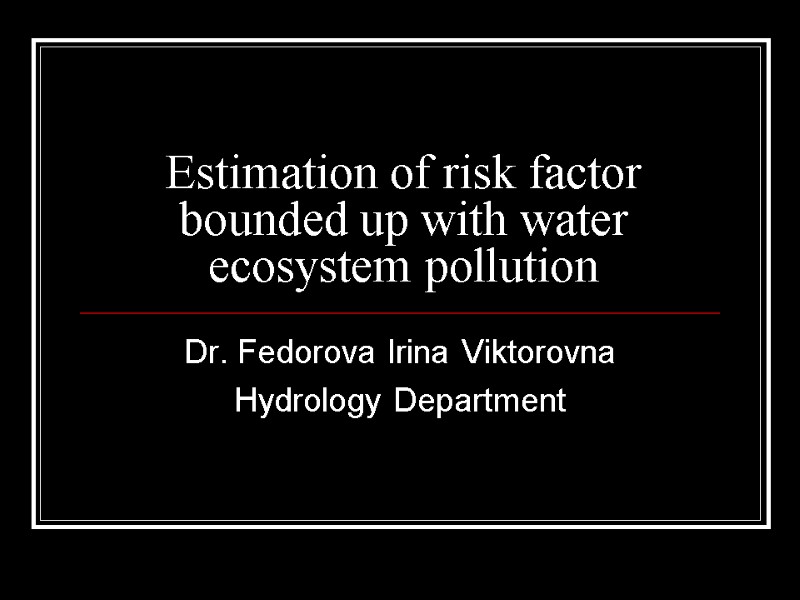
Estimation of risk factor bounded up with water ecosystem pollution Dr. Fedorova Irina Viktorovna Hydrology Department
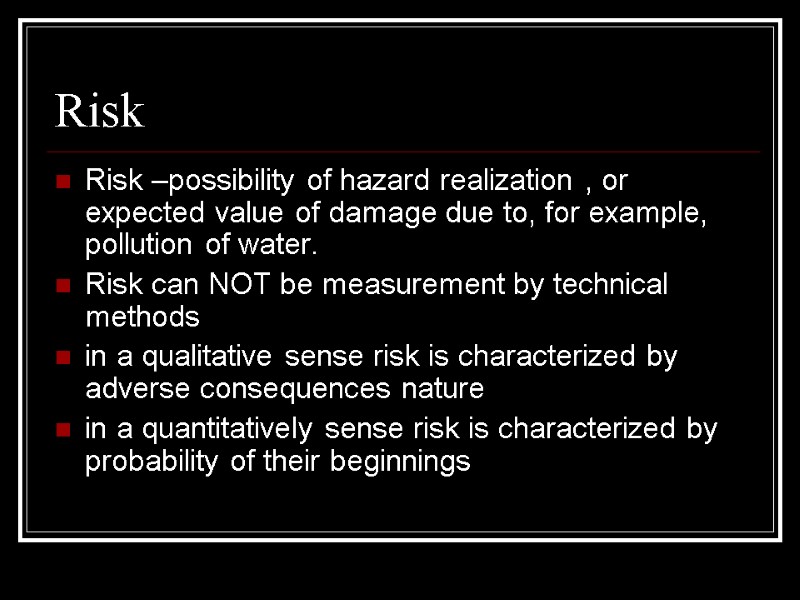
Risk Risk –possibility of hazard realization , or expected value of damage due to, for example, pollution of water. Risk can NOT be measurement by technical methods in a qualitative sense risk is characterized by adverse consequences nature in a quantitatively sense risk is characterized by probability of their beginnings
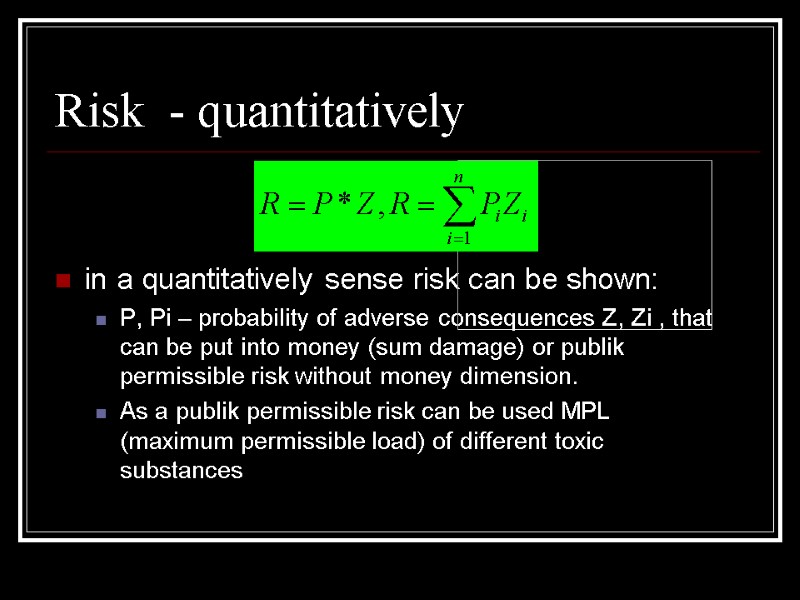
Risk - quantitatively in a quantitatively sense risk can be shown: P, Pi – probability of adverse consequences Z, Zi , that can be put into money (sum damage) or publik permissible risk without money dimension. As a publik permissible risk can be used MPL (maximum permissible load) of different toxic substances
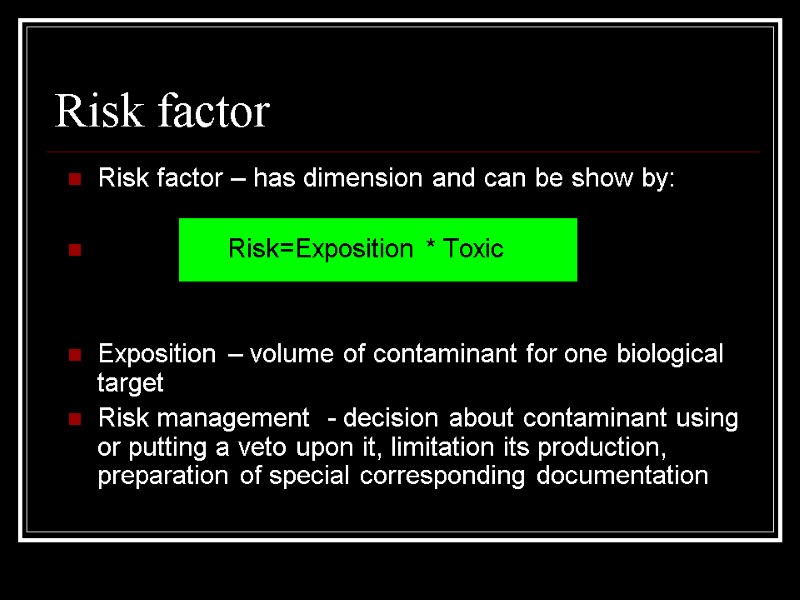
Risk factor Risk factor – has dimension and can be show by: Risk=Exposition * Toxic Exposition – volume of contaminant for one biological target Risk management - decision about contaminant using or putting a veto upon it, limitation its production, preparation of special corresponding documentation
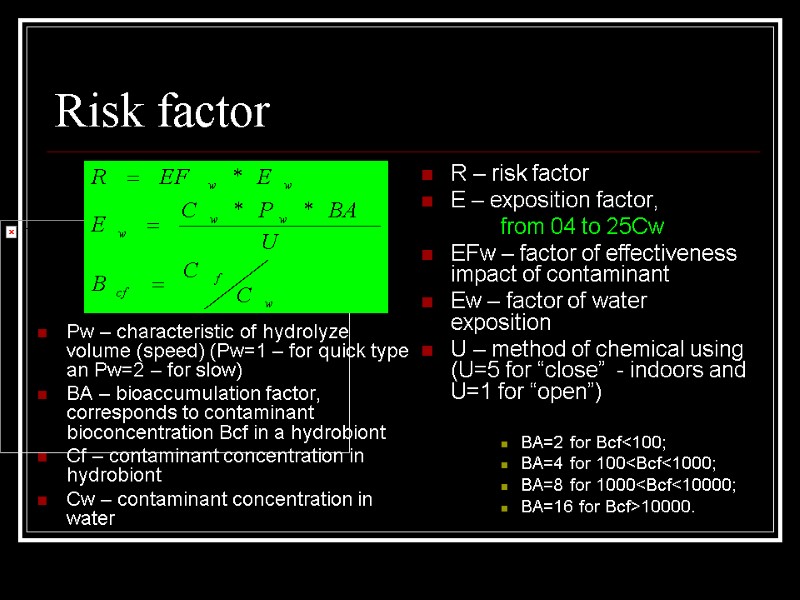
Risk factor Pw – characteristic of hydrolyze volume (speed) (Pw=1 – for quick type an Pw=2 – for slow) BA – bioaccumulation factor, corresponds to contaminant bioconcentration Bcf in a hydrobiont Cf – contaminant concentration in hydrobiont Cw – contaminant concentration in water R – risk factor E – exposition factor, from 04 to 25Cw EFw – factor of effectiveness impact of contaminant Ew – factor of water exposition U – method of chemical using (U=5 for “close” - indoors and U=1 for “open”) BA=2 for Bcf<100; BA=4 for 100
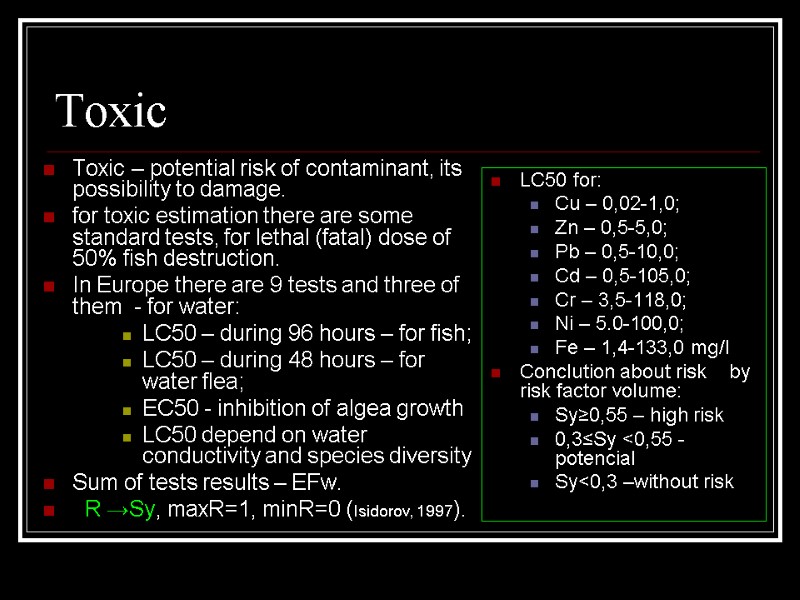
Toxic Toxic – potential risk of contaminant, its possibility to damage. for toxic estimation there are some standard tests, for lethal (fatal) dose of 50% fish destruction. In Europe there are 9 tests and three of them - for water: LC50 – during 96 hours – for fish; LC50 – during 48 hours – for water flea; EC50 - inhibition of algea growth LC50 depend on water conductivity and species diversity Sum of tests results – EFw. R →Sy, maxR=1, minR=0 (Isidorov, 1997). LC50 for: Cu – 0,02-1,0; Zn – 0,5-5,0; Pb – 0,5-10,0; Cd – 0,5-105,0; Cr – 3,5-118,0; Ni – 5.0-100,0; Fe – 1,4-133,0 mg/l Conclution about risk by risk factor volume: Sy≥0,55 – high risk 0,3≤Sy <0,55 - potencial Sy<0,3 –without risk
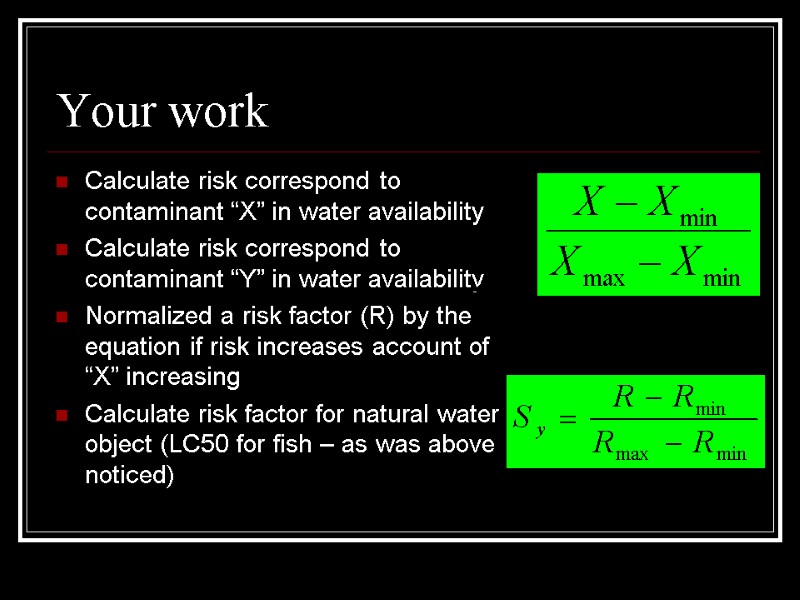
Your work Calculate risk correspond to contaminant “X” in water availability Calculate risk correspond to contaminant “Y” in water availability Normalized a risk factor (R) by the equation if risk increases account of “X” increasing Calculate risk factor for natural water object (LC50 for fish – as was above noticed)

Data. What are the “X”and “Y” contaminant?
400-risk_factor_pr3.ppt
- Количество слайдов: 8

